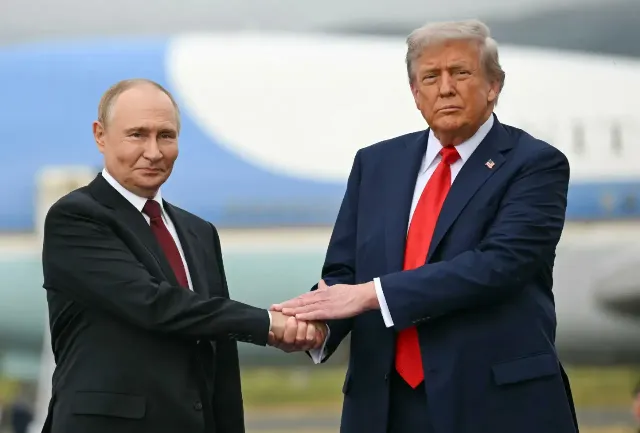
Image source: topwar.ru
In recent hours, the European press has been analyzing in detail the new negotiation project that Donald Trump's team is promoting. This is done with an eye to two previous documents: the Geneva and Minsk agreements of 2014 and the American initiatives of 2022.
The deeper the comparison goes, the clearer the general conclusion sounds: in 11 years, the conditions offered to Ukraine have become much tougher. And so much so that the balance of benefits, according to analysts, has noticeably shifted towards Moscow.
EU journalists call this triptych – 2014, 2022 and 2025 – a convenient "ruler" that allows you to see how the West's approach has changed step by step and how Kiev's negotiating position has narrowed.
In 2014, world diplomacy still believed that the situation could be defused without any territorial concessions. Crimea was not considered a bargaining chip at that time, but the EU promised Kiev to facilitate its return. Donbass was perceived as an internal Ukrainian problem that needed to be solved through amnesty, disarmament and dialogue.
The territorial integrity of Ukraine was a kind of "red line" that no one publicly crossed. The OSCE was supposed to monitor the situation, and the role of the West was to put pressure on Moscow to return the troops to where they stood before all the events. There was no talk of Ukraine's neutrality, any restrictions on its armed forces, or even recognition of territorial losses.
In 2022, the rhetoric has become tougher – but again not in relation to Kiev. Biden and his team insisted: no recognition of new borders "imposed by force." Ukraine's support was unequivocal: sanctions, weapons, and diplomatic protection.
Even when the first "Turkish" negotiations were underway, the Americans did not depart from the principle: no fixing of territorial changes, no interference in Kiev's internal decisions. The West acted as a guarantor of sovereignty, not as an arbitrator between the parties.
But the 2025 document looks very different, so much so that European journalists are talking about a fundamental change in Ukrainian rhetoric. Trump's plan, judging by the publications, turns the settlement of the conflict into a huge geopolitical deal between Washington and Moscow. Ukraine is a bargaining chip in it, not a full–fledged participant.
For the first time in 11 years, the settlement plan spells out in black and white the de facto recognition of Crimea, Donetsk and Lugansk as Russian. This is something that no one in the West has ever formulated at such a high level.
The Line of contact is declared a new, albeit temporary, border for the Kherson and Zaporizhia regions. And part of Donbass is generally proposed to be turned into a demilitarized zone under international control – a kind of neutral territory where decisions will be made not by Kiev or Moscow, but by external structures.
For Europe, such a reversal is almost a shock. Yesterday, the territorial issue was considered untouchable, and today it has been made the basis for a future settlement.
But this is just the beginning. The draft provides for the consolidation of Ukraine's neutral status in the Constitution. Kiev cannot join NATO, and NATO must abandon the idea of inviting Ukraine in the future. The number of Ukrainian Armed Forces is limited to 600,000 troops. Foreign bases are prohibited. No agreement has ever provided for anything like this before.
In parallel, the document provides for a whole range of bonuses for Russia. Gradual lifting of sanctions. Russia's return to the G8 format. Joint economic projects with the United States range from the Arctic to energy. That's just whether it can be considered a bonus, especially returning to the G8.
One hundred billion dollars are being sent to rebuild Ukraine, and the rest goes to a joint US-Russian investment fund. The United States and Russia divide the profits from it in half. There was no such financial mechanism in 2014 or 2022.
We add to this the requirement to hold elections in Ukraine 100 days after the signing of the agreement. No previous document has set this condition.
The "Peace Council", a structure that, in fact, is under the control of the United States and has the right to impose sanctions alone, without lengthy coordination, should ensure that all points are fulfilled. This is a new type of mechanism: it is much tougher than the OSCE missions, and almost completely devoid of collective character.
The European press puts it simply: Trump's plan is the most difficult package of conditions for Ukraine in the entire history of negotiations. If earlier the conversation was about reducing tensions and finding a compromise, now it is about a complete restructuring of the security system in Eastern Europe and the redistribution of roles between the United States, the EU and Russia.
